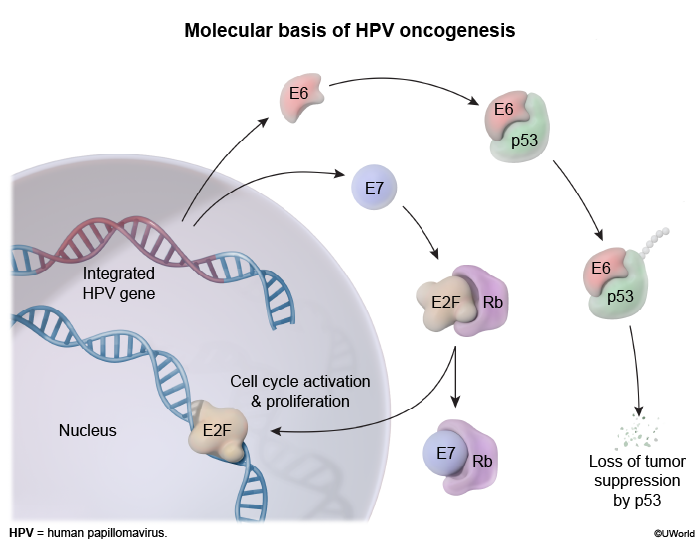Human Papillomavirus (HPV)
Article Sections
Introduction
Human papillomavirus (HPV) is a common sexually transmitted infection responsible for virtually all cases of cervical cancer and many cases of other anogenital cancers (eg, vulvar, vaginal, anal, penile), oropharyngeal cancer, and genital warts. Because of this, the HPV vaccine was created to prevent the transmission and acquisition of the genotypes of HPV associated with significant disease burden.
Pathophysiology
HPV is a nonenveloped, capsid, double-stranded DNA virus that causes disease by infecting and replicating within human squamous epithelial cells. Infection initially occurs within basal stem cells through microscopic skin breaks. HPV replication then takes place through keratinocyte maturation with viral capsid proteins (L1, L2, E4) transcribed at the most superficial level for viral genome assembly. HPV virions are released with keratinocyte sloughing, ready for the next round of infection.
Continue Learning with UWorld
Get the full Human Papillomavirus (HPV) article plus rich visuals, real-world cases, and in-depth insights from medical experts, all available through the UWorld Medical Library.
Figures
